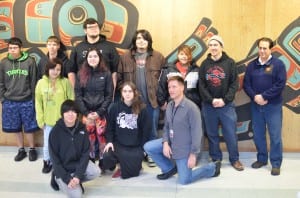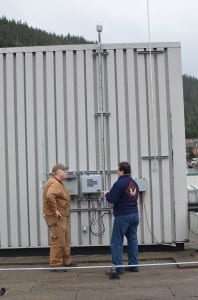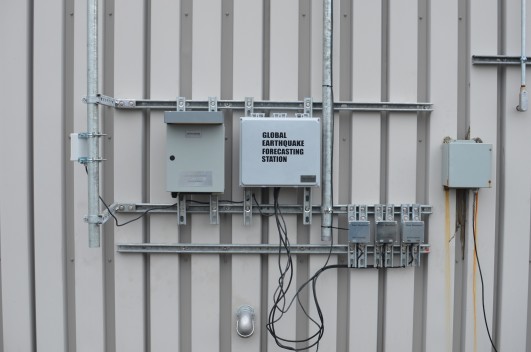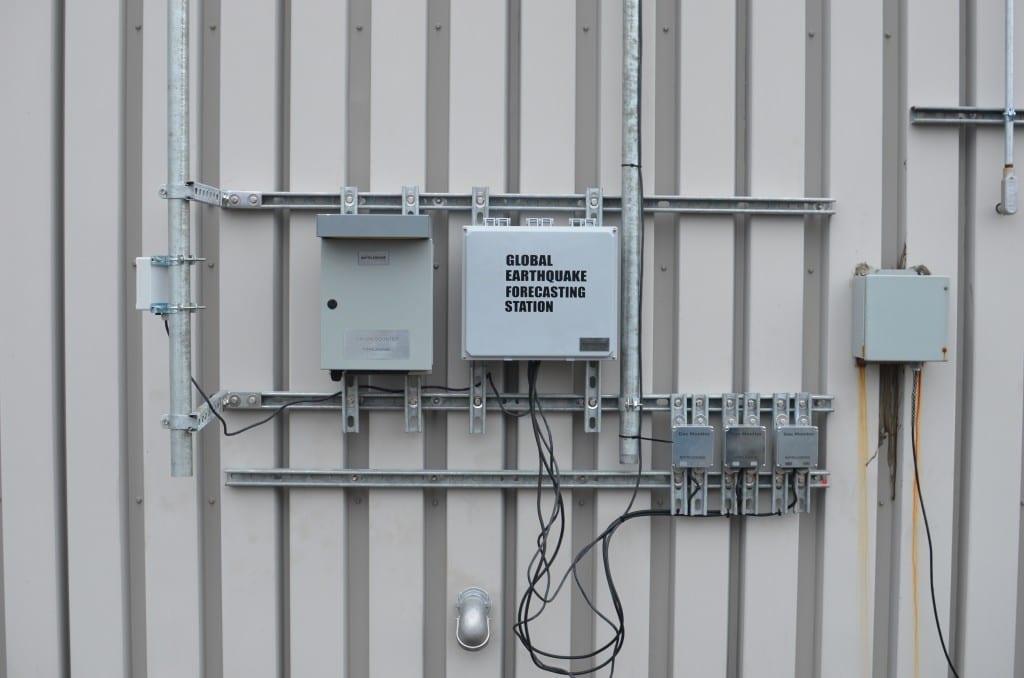Ketchikan High School’s roof has become part of a NASA research experiment that could help scientists eventually predict earthquakes.
“Metal boxes with magical little wires going every which way with like a giant antennae coming out.” That’s what Tribal Scholar Program student Austin DeWitt Williams saw mounted on a wall on Kayhi’s roof. In black lettering one of the boxes read Global Earthquake Forecasting Station. The equipment was designed by NASA and brought to Ketchikan through Trillium Learning, which brings real-time real world projects into schools.
 Ron Fortunato, Trillium Learning President, joined the Tribal Scholar students on the roof to explain what those metal boxes are doing. “This is the magnetometer. You see how it’s pointing towards the North and what that does is pick up those electrical signals from the tectonic plates. When they crush against each other they release these electrons and it forms that current. That current comes up through the water. It can be measured 100s of kilometers away, even.” Other boxes he said are measuring gasses, “Sulfur-dioxide, carbon-monoxide, nitrogen-dioxide, ozone all those things are pre earthquake gasses, which increase when electricity comes up through the ground.”
Ron Fortunato, Trillium Learning President, joined the Tribal Scholar students on the roof to explain what those metal boxes are doing. “This is the magnetometer. You see how it’s pointing towards the North and what that does is pick up those electrical signals from the tectonic plates. When they crush against each other they release these electrons and it forms that current. That current comes up through the water. It can be measured 100s of kilometers away, even.” Other boxes he said are measuring gasses, “Sulfur-dioxide, carbon-monoxide, nitrogen-dioxide, ozone all those things are pre earthquake gasses, which increase when electricity comes up through the ground.”
The forecasting system is one of three in the world. The other two ground stations are on top of schools in Kodiak. NASA researchers have been working on the science for years, using data from previous temblors to figure out what happens during an earthquake and if they might be able to use that information to predict them. Fortunato saw NASA working on the project and asked what was next. NASA was looking to put sensor stations in active areas. In response he asked, “what if we could do it in Alaska? And they said that would be the first choice, to do it in Alaska.”
According to the US Geological Survey, Alaska gets between one to 200 earthquakes a day. Most of them are small but it makes for an ideal place to test this new system. Fortunato said NASA has no obligation to work with students, but because of Trillium Learning projects in the past, they trust him, and he said they trust the kids. “They’re not interns they’re actually required and responsible for producing data, information, maintaining the platform, doing prototype development of the platform things that NASA employees would do.”
An obligation not lost on DeWitt Williams, who said he is nervous about messing up. “ It’s kind of like when you’re on the bicycle and everyone’s watching you and this is like one of your first times riding it. You get to see it as everyone seeing you, everyone watching you intently making sure you do well and then you almost crash. You kind of waver, you get a speed wobble and you think oh my gosh everyone’s going to judge me on this.”

Fortunato says nerves are normal, but from his experience kids involved in real world projects like this learn quickly. On the first day, DeWitt Williams was still a bit unsure how to explain the project saying, “we’re trying to… well I guess… test…the earth quake… like… I don’t know how to put it in words.”
One thing that he was clear about was that the science he’ll be working on could help save lives. NASA still isn’t even sure it will work, but they hope that the data these Ketchikan students collect can help scientists forecast earthquakes hours or possibly days in advance.







